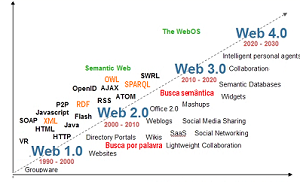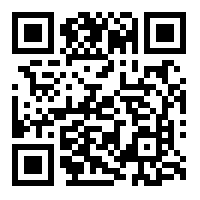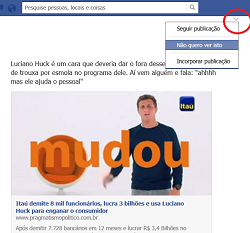
Arquivo para a ‘User interaction’ Categoria
Windows 8.1 is released free
As the Microsoft , the Windows version 8.1 RT is available for free download , although the site itself know that a small number of user Surface tablet (according to site 1 problem in 1000) have found a problem installing this device .
The previous version called Preview no longer be available after January says the site , but there are few changes from this version , and the interface impacts some users because it does not have major changes , an already experienced by users is the integration with SkyDrive , which is very good.
The library of documents , pictures , music and videos are not gone , just not apparent , but you can through the Navigation Panel to make it visible (see aside).
The famous ( and somewhat uncomfortable ) buttons in the sidebar on the right side , the five buttons , “Search ” , ” Share ” , ” Start” , “Devices ” and ” Settings.” Where the most important is the latter, which leads to a new sidebar with several sets of settings to change the behavior and appearance of the interface, but it is certain that most users will not move it.
The old Start button , now reappears in the lower left corner of the desktop , where it was since Windows 95, but does not call the old Start menu is just a shortcut to the home screen , the new interface called Metro .
.
But if you think getting nasty walking the mouse pointer until you find the exact corner where he opens the bar , you can open it directly with the shortcut “Windows C ” , but setting there is a way to open it , any triggering of a their functions buds combining with some Windows key with the character ” S ” to “Search ” , ” H ” to ” Share ” button to pure Windows ” Start” ( which leads to the Start screen ), “K” to “Devices ” and “I” to” Settings”, with some frequency of use, you will have to memorize.
Interactive map shows deforestation
The map developed by researchers at the University of Maryland, USA, shows the evolution of global deforestation data since 2000, the Global Forest Change.
since 2000, the Global Forest Change.
The application is available online for free, and the data on the map of Brazil clearly show that deforestation advances in the Midwest, Amazon, Pará and northeastern.
Data were collected from 350,000 images collected by the Landsat 7 and the data of the largest deforestation include Malaysia, Indonesia, Paraguay and Angola.
According to Matthew Hansen, Maryland professor who heads the project: “This is the first map of forest change that is consistent globally, and also under the relevant local aspect”, and hopefully an awareness overall.
The world can be seen as a whole in many ways, is a society-world.
Realities and fantasies of Web 3.0
In November 2006 , John Markoff wrote in the New York Times , using the term Web 3.0 , saying that she would find  new ways of mining human intelligence : ” From the billions of documents that form the World Wide Web (WWW) and the links that bind them, computer scientists and a growing group of new businesses … ” (see New York Times).
new ways of mining human intelligence : ” From the billions of documents that form the World Wide Web (WWW) and the links that bind them, computer scientists and a growing group of new businesses … ” (see New York Times).
Definitions vary enough from those who think the customization features to the Semantic Web and barrel , from costumes like Conrad Wolfram thinks that Web 3.0 will be the place where ” the computer will generate new information ” , even pessimistic as Andrew Keen ( the Cult of the Amateur) you see in Web 3.0 a return to experts and authorities , calling it ” unrealisable abstraction ” , the idea of connecting and organizing information on the Web
Consider a text actually founding text of James Handler , published in IEEE Computer January 2009 : ” Web 3.0 emerging ” on to explain that after countless laps around the Semantic Web technology has finally found that can help her accomplish – themselves.
The article explains the technology integrated into the emerging Semantic Web are already starting to produce results, from basic applications using RDF description ( in the description of resources, link data from multiple Web sites using a standard language SQL , the SPARQL query that RDF to connections that are ready in XML or OWL ontologies .
Far from being utopian , so the scenario of the Semantic Web is now real and results .
QR, what is
Being a two-dimensional code, QR (Quick Response) can store more information than exponentially one -dimensional bar code (white and black is 0 is 1) , storing content information complex , adjacent to the URL , for example, directs this blog .
one -dimensional bar code (white and black is 0 is 1) , storing content information complex , adjacent to the URL , for example, directs this blog .
The code was generated from the Google url shortener , then selecting ” details” .
Using some gadget camera or scanner , the code is converted into text, which can then be interpreted as using the text ( interactive) , with a URI address , phone number , located georeferenced , an email, a contact or SMS .
The QR Code was first used in the production of vehicles, but is now used both in inventory management and inventory control in industry and commerce.
From 2003 applications were developed to facilitate users to enter data in mobile phone using the phone’s camera .
QR codes are also common in magazines and advertisements , to record addresses and URLs , as well as detailed personal information.
Study shows use of technology in teaching
The study Learning Objects in the Classroom: Resources , Methods and Strategies for Improving the Quality of Education was developed over two years by a research group at the University UNESP Araraquara in Brazil, that evaluated the performance of 400 students from eight classes 2 and 3 ° years of high school with the class of learning objects , which are the technological resources that allow some interaction with the content , such as animations , simulations and educational games .
The use of games is already common and integrating the game Minegraft , eg using building blocks , is now used worldwide to teach literacy and mathematics aggregate biology (photo )
is now used worldwide to teach literacy and mathematics aggregate biology (photo )
Research has shown that students in the classroom who had used technological tools had higher yields by taking as a basis the average five or below this value had a gain of 51 % performance in physics and mathematics , the project is coordinated by Professor Silvio Fiscarelli department didactic UNESP Araraquara .
Also, students with an average above five , had an average gain of 13 % , showing that the appropriate use of technology is beneficial to education .
For the project were used 20 technological tools in the classroom, with some created by the core teaching of UNESP , but most was used for educational repositories as BIOE ( Bank for International Educational Objects ) and rived , the SEED program (Department of Education distance ) or translated in international repositories .
The project now has the support of FAPESP (Research Support Foundation of the State of São Paulo ) , and extend the study to 660 students , with 600 students being done in the three years of high school , and extended to the areas of Portuguese , chemical and philosophy.
Besides the training of teachers , this new phase will also include 35 notebooks , so that students no longer need to go to the computer lab with the activities are carried out within the classroom .
The advantage of being visible
Facebook has decided to disable a privacy feature that allowed users to restrict who could find by searching their profiles within  the social network , while announcing a search engine competitor to Google (see note at O Globo) , so the question is visibility , unlike good movie ” the advantage of being invisible ” that discusses today’s teens .
the social network , while announcing a search engine competitor to Google (see note at O Globo) , so the question is visibility , unlike good movie ” the advantage of being invisible ” that discusses today’s teens .
Last year , many netizens had already disabled , but she allowed users to use them to bisbilhotas profiles and relationships in the social network without being known , is what makes many government agencies (see previous post ) .
The Facebook justified this removal percentage stating that ” single-digit ” of about 1.2 billion members who used the feature , but the fact is that this profile could be used for invasion of privacy , crimes and “security ” .
Users can continue to protect your privacy by limiting the public will have access to your posts ( just friends , certain groups or all users , for example) and can also prevent unwanted posts and give your opinion about negative campaigns that have invaded the network and also tags unwanted .
We remind users of the ” face” that can become invisible campaigns that denigrate the image of someone , or simply imprint fundamentalist nonsense , there is a tool on the side of each post to make these things invisible
Countries democracy on the Internet
A broaden study published by Freedom House, entitled Freedom in The World in 2013: Democratic Breakthroughs in the Balance, shows the variations of democratic freedom with internet use varies in different countries, with highlights improvements in two countries that have made their “spring Arab “and highlight negative in countries where political struggle embarked on paths undemocratic.
in the Balance, shows the variations of democratic freedom with internet use varies in different countries, with highlights improvements in two countries that have made their “spring Arab “and highlight negative in countries where political struggle embarked on paths undemocratic.
It is a demonstration that the numerical and analytical Internet freedom correlates with democratic and indicates that the future free and democratic components will have the freedom to use this new medium that is the internet and its applications on the Web
The study shows that civil liberties have suffered setbacks last year also in Latin America, especially in Ecuador, Paraguay and Suriname.
But we can celebrate that a total of 90 countries can be considered truly free and democratic, an increase of three countries in relation to 87, 2011.
Worldwide, about 3 billion people, 43 percent of the population, has indeed all civil liberties, while 1.6 billion lived in countries where these freedoms are partially or almost completely limited.
This gives an index d remaining 34% who live in countries considered no liberties by Freedom House, which totals 2.3 billion people who suffer oppression in the world.
With a methodology that applies a three-pillar approach to capture the level of the Internet and freedom of ICT: barriers to entry, limits content and violations of user rights (surveillance, privacy and extra-legal harassment) content limits ( filtering and blocking content) and violations of user rights (includes up to prison).
The following table shows that advanced improvements in countries and countries that are declines:
| Declines | Improvements |
| Mali 46 | Libya 35 |
| Madagascar 23 | Tunisia 35 |
| The Gambia 20 | Burma 21 |
| Guinea-Bissau 20 | Tonga 18 |
| Bahrain 18 | Egypt 13 |
| Ukraine 16 | Zimbabwe 13 |
| Ethiopia 15 | Guinea 11 |
| Eritrea 10 | Moldova 10 |
| Rwanda 10 | Côte d’Ivoire 9 |
| Yemen 10 | Georgia 9 |
| Burundi 9 | Thailand 9 |
| Ecuador 9 | Tanzania 8 |
| Honduras 9 | Montenegro 6 |
| Sri Lanka 9 | Sierra Leone 6 |
E-voting experiment in Norway
Norway held parliamentary elections this week and had the opportunity to  hold its second pilot project for e-voting (electronic voting online).
hold its second pilot project for e-voting (electronic voting online).
The pilot follows the previous evaluation, which was done during the local elections in 2011.
According to statistics released by the Ministry of Local Government and Regional Development, the ministry responsible for running elections in Norway, participation and voting rights has increased significantly compared to 2011.
In this year’s election, 28 percent of all voters voted municipalities trial via the Internet, up from 16 percent in the 2011 pilot.
To prove both the reliability and transparency of the pilot project, the source code of the e-voting system this year was placed in the public domain, allowing citizens to download and study.
Electronic voting mechanism used a public key (encryption) for delivery.
Also the Italian province of Salento held this year its e-voting experiment, and evaluation has been published in various media
The repercussion also led prof. Marco Mancarella, as head of international research project “Salento eVoting“, the constituency of North America, invited by Mr. Fuchsia Nissoli to report on electronic voting under the “Seminar on Reforms District abroad,” organized by House of Representatives, on July 4th, 2013, moderated by Dr. John Lattanzio of the Association of “Dialogues”.
Curiosities the IFA 2013th
The fair that ends this end of week in Berlin, the IFA 2013 presented several novelties, one of them is  a camera Sony Cyber-shot QX10 or QX100 whose lenses-camera, that can be used connected to smartphones with iOS or Android via Wi-Fi.
a camera Sony Cyber-shot QX10 or QX100 whose lenses-camera, that can be used connected to smartphones with iOS or Android via Wi-Fi.
Another novelty of Samsung was the Galaxy Note 3, the size went from 5,5 to 5.7 inches, but when using the device during few seconds can-if notice the difference in image quality given pel the native resolution of 1920×1080 pixels.
The Samsung reinvented the way the pen S Pen acts in daily use transforming it into a phablet, that gives ability to provide quick access to functions most useful of the appliance in the system christened as Air Command.
Num radial menu there are five customization options: Action Memo, Scrapbook, Screen Capture, S Finder and Pen Window
Action memo is a notepad, Scrapbook is a system that makes a kind screen capture, a little different than Screen Capture, S Finder enables that you ache easily the contents present in the handset and Pen Window: simply draw a rectangle and arises the menú of the appliance.
Digital devices in the Brazilian book Biennial
According declared Marcus Antônio Parise, responsible for the content of Iba, a company specializing in e-books: “The digital market in Brazil had a forecast of a boom in 2013, which did not happen. But digital has grown in an organized and conscious . and that’s good for publishers, players and consumers. ”
The giant market e-books Amazon will also be at the fair, but its new e-reader (see our post) is only in the domestic market in November.
Another company will present the canadian Kobo, its director Samuel Vissoto, says the domestic market varies 2-4% compared to the U.S.A., which now has a share of 26% of all books sold, Vissoto said: “We have a long way to go. has space for everyone to make money, grow and consumers enjoy the digital book market. travels and takes you a thousand books with you. ”
market varies 2-4% compared to the U.S.A., which now has a share of 26% of all books sold, Vissoto said: “We have a long way to go. has space for everyone to make money, grow and consumers enjoy the digital book market. travels and takes you a thousand books with you. ”
The provisions of these companies begin to have more affordable prices to the Brazilian public, ranging from R$ 289 to R$ 699.
The International Book Fair, ended on Sunday in RioCentro, West Zone of the city of Rio de Janeiro.

